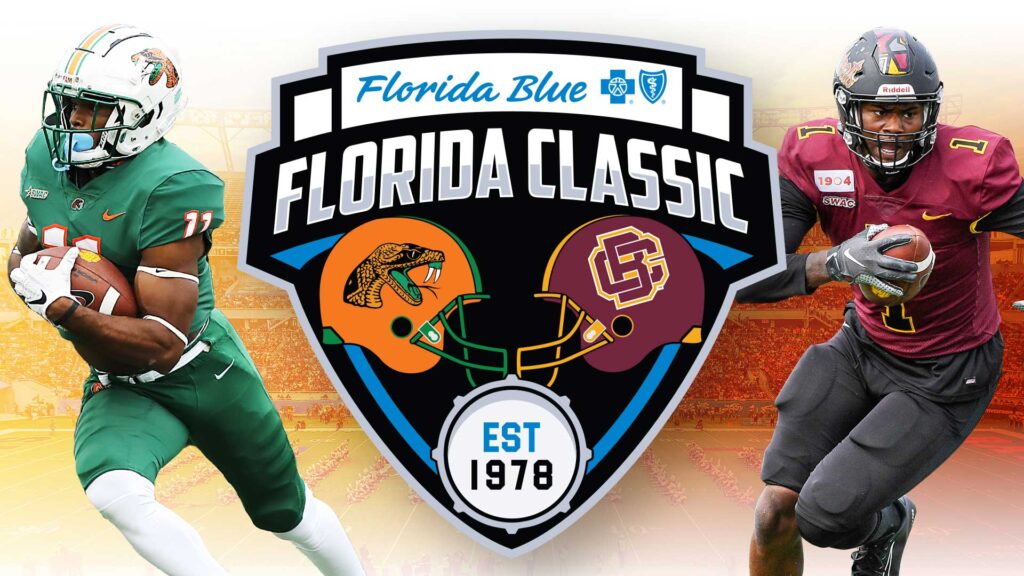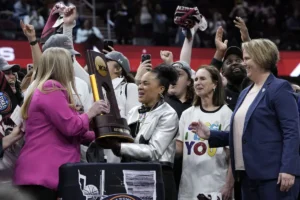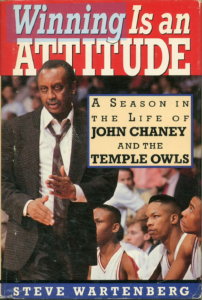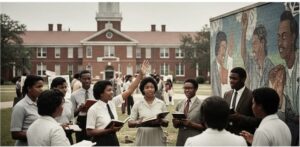HISTORY & TRADITION OF THE FLORIDA CLASSIC

The Florida Classic is more than just a football game and more than an in-state rivalry. It is now the nation’s largest football game between two Historically Black College/University (HBCU) schools, surpassing the Bayou Classic between Grambling and Southern in New Orleans as the top attended game in NCAA Division I-AA. Since its inception in 1978, the game has now seen over 2 million spectators attend the game (2,157,883).
The Florida Classic, formally the Florida Blue Florida Classic, is a friendly annual college football rivalry game between two of Florida’s most popular HBCUs (historically black colleges/universities). One of the schools is Florida A&M University (FAMU)—a large public university in Tallahassee, while the other is Bethune–Cookman University (B-CU), a small private school in Volusia County.
The Classic boasts strong economic, cultural, and social significance. As such, it also serves as a successful fundraiser for education initiatives at both universities. The Florida Classic is a major event for people all over the state and the nation to celebrate their culture, diversity, and love for the rival teams. The game also offers a perfect opportunity to meet and bond with family, friends, colleagues, and college comrades over a competitive game, good food, and great music.
The Florida Classic, a Sunshine State Tradition
The Florida Classic, operated by Florida Citrus Sports, the non-profit group behind the Citrus Bowl and the Cheez-It Bowl, is a longstanding tradition dating back nearly a century. It is more than just the nation’s largest annual HBCU football game — it’s a celebration of sports, family, music, and culture woven into the fabric of Central Florida.
Today, it is one of the most anticipated college football bowl games in the country and boasts an average of 60,000 spectators per game. The highest attendance, 73,358 attendees, was recorded in Orlando in 2003.
Fans who miss the game can also catch it from the comfort of their homes, courtesy of ESPN Networks. ESPN Classic has been televising the action-packed game nationally in the past years as part of their multi-year contract with former B-CU and FAMU conference—Mid-Eastern Athletic Conference (MEAC). Despite the teams’ departure for the Southwestern Athletic Conference, it seems the ESPN Network will keep televising the game nationally.
What’s more, the game garners the winning university bragging rights. It also offers the perfect recruitment opportunity for both universities as current students, prospects, and parents interact.
The Very Early Days of the Florida Classic
The Classic has been a sensation for decades and has impacted several generations thanks to its rich history, traditions, and bragging rights. Although “The Florida Classic” was born in 1978 in Tampa, the archrivals have played against each other since 1925 in Tallahassee.
FAMU won their first game against B-CU with a score of 25-0, but B-CU recovered the following year when they won the game after scoring 12-0. The game quickly became more competitive and saw the FAMU Rattlers win 19 consecutive games. The fierce competition drew even larger crowds of fans eager to see the action play out in person.
When the home stadiums eventually became too small to hold the tens of thousands of spectators, they had to find a venue large enough to accommodate the surge. Some of the venues they used include:
- Daytona International Speedway
- Doak Campbell Stadium
- Welch Memorial Stadium
Becoming the Florida Classic We Know Today
The search for the ideal stadium did not end there. The schools and game organizers searched for the perfect stadium through the early and mid-’70s until they settled on a permanent location in Tampa in 1978.
Thus, the Florida Classic we think of today was officially born. Once again, the Rattlers took home the cup after turning a 17-0 deficit into a 27-17 win with the help of their head coach Rudy Hubbard (a former Woody Hayes assistant). The premiere win was instrumental in helping the Florida A&M team win the inaugural NCAA Division 1-AA championship that same year.
The neutral location at the Tampa Stadium became home to the game from 1978 to 1997, holding crowds of up to 55,000.
However, there was a two-year hiatus between 1983 and 1984 when the two teams could not agree on where the game should occur. Finally, the teams resumed the championship rivalry game in Tampa Stadium in 1985 after receiving public pressure from fans, alumni, and state officials. The B-CU Wildcats won the renewal game with a 31-27 score.
The Move to Orlando Begins a New Era for the Florida Classic
The search for the perfect location continued, and in 1997, the two schools agreed to move the game to Camping World Stadium, then called the Florida Citrus Bowl, in Orlando. It was immediately clear that Orlando was the perfect location after the first game garnered over 56,000 fans, twice the previous year’s attendees in Tampa. Orlando’s central location and variety of tourist attractions became a catalyst for the game’s success.
Since establishing roots in Orlando, The Florida Classic has seen more than 1.3 million people attend the highly-anticipated game.
FAMU remains the overall championship leader, with the series sitting at 45-24-1, thanks in large part to their early success. However, over the last two decades of the game being played in Orlando, FAMU has bagged 11 wins while B-CU has won 13 (9 being consecutive) out of 24 games.
The Record-breaking Success of the Florida Classic in Orlando
Since 1978, the game has gathered nearly 2 million spectators, almost half of them attending the game in Orlando. After moving to Orlando, the average yearly attendance is over 60,000 fans per game, a significant increase from the average 40,000 fans who attended the game in Tampa.
Attendance at the Florida Classic has seen record-breaking numbers since moving to Orlando, including:
- The attendance record set during the 1997 game was broken when 66,245 people showed up for the game the following year.
- In 1999 the Florida Classic amassed 70,125 fans, making it the sixth-largest football event ever held in the Citrus Bowl.
- The 2000 MEAC title game drew 70,719 for a 31-28 thriller won by FAMU.
- To date, the largest Florida Classic crowd ever held in the Camping World Stadium stands at 73,358.
In addition to the star power on the gridiron — with such names as Rashean Mathis, Nick Collins, Eric Weems, and Quinn Gray dotting rosters since the move to Orlando — FAMU’s Marching 100 and B-CU’s Marching Wildcats always provide the perfect soundtrack for Classic weekend with their memorable halftime performances, while the pregame FanFest outside the stadium offers a tailgate experience unlike any other.
Economic and Other Benefits of The Classic
The Classic is rooted in a culture that brings seniors, adults, young adults, teenagers, and children as young as toddlers together to celebrate their pride for the HBCUs. As a result, younger attendees grow up to admire the HBCUs, and many even strive to attend one of the schools in their future.
The Classic weekend is also a spectacular kickoff to the bowl season and provides a huge economic boost to Orlando and the larger Central Florida community. Three out of four spectators are from out of town, resulting in an influx of tourist dollars to businesses throughout the area. The result is an economic impact of up to $28 million per year for the Central Florida region.
Additionally, the schools benefit from revenues obtained from the game and subsequent events around the community. For instance, the Orange County Board of County Commissioners (BCC) awards the Florida Classic Consortium $500,000. Together with tourist-tax and other funds amassed from the game, the donation goes towards providing FAMU and B-CU students with scholarships.
The Florida Classic Is More Than Just the Game
The Florida Classic is more than in-state rivalry or a mere college football game. It has grown from a fierce HBCU rivalry to a Central Florida tradition that brings together locals and visitors for a thrilling weekend competition.
Although the game is a highlight, this celebration has the feel-good atmosphere of a can’t-miss music festival and a family reunion mixed into one. It is also America’s largest HBCU football event and the lead for the black college post-season parade.
The variety of activities lined up for fans make the Classic much more exciting, impactful, and memorable. There are a lot of opportunities for family fun and socializing, like the tailgate and a panel discussion offering insight into pressing issues. Other exciting events leading up to the game include:
- Florida Classic Night of Distinction: A VIP awards ceremony that ushers in the Florida Classic Weekend. It’s held at the Varsity Club at Camping World Stadium and involves recognizing individuals for their contribution to the game.
- The Florida Classic Consortium Kickoff Luncheon: Held at the Hyatt Regency Grand Cypress, this event gathers student leaders, pep bands, players, and university officials. The luncheon is a celebration of the season and a preview of the upcoming match. It symbolizes that the two rival teams are united in the world though divided on the field.
- The Diversity Job Fair: It is the largest Diversity Job Fair in Florida, featuring more than 135 employers and offering opportunities for resume reviews, onsite interviews, professional headshots, and keynote speaker sessions to help job seekers.

The Highly Anticipated Battle of the Bands
The Battle of the Bands is, without a doubt, among the most anticipated events throughout this activity-filled weekend. This battle allows teams to build excitement for the upcoming game while boosting team and school spirit.
It features dance lines, drum majors, tuba and trumpet sections, plus precision drumlines. The bands also exchange quite a bit of friendly banter, which is a crowd-pleasing favorite. Although there’s no de facto winner in this battle, there are bragging rights on the table. Beyond the Amway center event, the bands also battle it out during a halftime show.
How the Florida Classic Helps Transform Neighborhoods and Communities
One of the most significant impacts of the Florida Classic is the work done by Florida Citrus Sports, event managers, and other stakeholders toward stronger community foundations.
As part of their commitment to positively transforming the communities living in the West Lakes neighborhoods, one of the first efforts was forming the Communities of West Lakes to strengthen five historic and historically underserved communities into a cohesive unit.
The Classic has also allowed Florida Citrus Sports and LIFT Orlando to facilitate the transformation of these historically underserved communities by:
- Offering 200 units of affordable housing in Pendana at West Lakes
- An early learning center on the doorstep of Orange Center Elementary
- A cradle-to-career education plan intended to provide every child from the Communities of West Lakes with the best educational experience that leads to an exemplary career
- An impressive Boys & Girls Club
- A $9 million renovation of the Lake Lorna Doone Park in conjunction with the Orange County City Council
- A FREE summer camp program for West Lake’s economically-disadvantaged children
The Florida Classic is an indispensable event for the Central Florida community. It’s not only a rivalry college game but an experience that’s shaping Florida’s social, cultural, and economic well-being. And with a centrally-located, first-class venue playing the role of host to these historic institutions, the future of the Classic is ripe with promise.
YEAR-BY-YEAR-RESULTS
| YEAR | RESULTS | ATTENDANCE | LOCATION |
| 2022 | FAMU 41, B-CU 20 | 55,257 | Orlando |
| 2021 | FAMU 46, B-CU 21 | 54,198 | Orlando |
| 2019 | B-CU 31, FAMU 27 | 55,730 | Orlando |
| 2018 | B-CU 33, FAMU 19 | 52,142 | Orlando |
| 2017 | B-CU 29, FAMU 24 | 47,819 | Orlando |
| 2016 | B-CU 39, FAMU 19 | 45,372 | Orlando |
| 2015 | B-CU 35, FAMU 14 | 45,728 | Orlando |
| 2014 | B-CU 18, FAMU 17 (OT) | 41,126 | Orlando |
| 2013 | B-CU 29, FAMU 10 | 45,321 | Orlando |
| 2012 | B-CU 21, FAMU 16 | 32,317 | Orlando |
| 2011 | B-CU 26, FAMU 16 | 60,218 | Orlando |
| 2010 | FAMU 38, B-CU 27 | 61,712 | Orlando |
| 2009 | FAMU 42, B-CU 6 | 59,418 | Orlando |
| 2008 | FAMU 58, B-CU 35 | 60,712 | Orlando |
| 2007 | B-CU 34, FAMU 7 | 65,367 | Orlando |
| 2006 | FAMU 35, B-CC 21 | 71,216 | Orlando |
| 2005 | FAMU 26, B-CC 23 (OT) | 70,112 | Orlando |
| 2004 | B-CC 58, FAMU 52 (OT) | 71,153 | Orlando |
| 2003 | B-CC 39, FAMU 35 | 73,358 | Orlando |
| 2002 | B-CC 37, FAMU 10 | 70,201 | Orlando |
| 2001 | FAMU 31, B-CC 21 | 70,112 | Orlando |
| 2000 | FAMU 31, B-CC 28 | 70,719 | Orlando |
| 1999 | FAMU 63, B-CC 14 | 70,125 | Orlando |
| 1998 | FAMU 50, B-CC 14 | 66,245 | Orlando |
| 1997 | FAMU 52, B-CC 35 | 56,351 | Orlando |
| 1996 | FAMU 41, B-CC 7 | 31,208 | Tampa |
| 1995 | FAMU 43, B-CC 0 | 37,006 | Tampa |
| 1994 | B-CC 27, FAMU 24 | 36,813 | Tampa |
| 1993 | FAMU 27, B-CC 22 | 31,264 | Tampa |
| 1992 | B-CC 35, FAMU 21 | 40,714 | Tampa |
| 1991 | FAMU 46, B-CC 28 | 40,259 | Tampa |
| 1990 | FAMU 42, B-CC 20 | 42,776 | Tampa |
| 1989 | FAMU 30, B-CC 7 | 43,703 | Tampa |
| 1988 | B-CC 25, FAMU 0 | 50,259 | Tampa |
| 1987 | FAMU 21, B-CC 10 | 41,521 | Tampa |
| 1986 | FAMU 16, B-CC 6 | 38,204 | Tampa |
| 1985 | B-CC 31, FAMU 27 | 41,358 | Tampa |
| 1982 | FAMU 29, B-CC 14 | 39,160 | Tampa |
| 1981 | FAMU 20, B-CC 0 | 45,964 | Tampa |
| 1980 | B-CC 16, FAMU 14 | 43,281 | Tampa |
| 1979 | B-CC 25, FAMU 20 | 40,253 | Tampa |
| 1978 | FAMU 27, B-CC 17 | 42,061 | Tampa |








